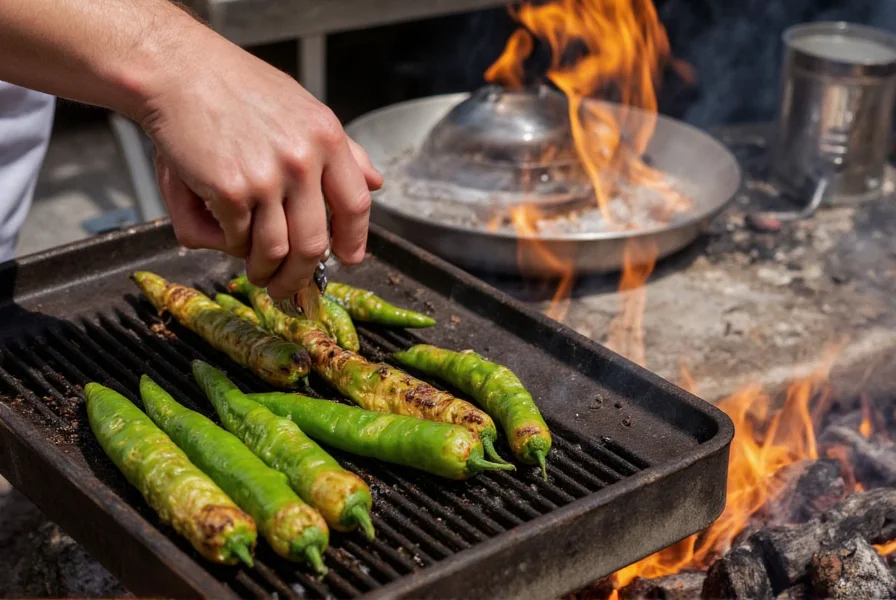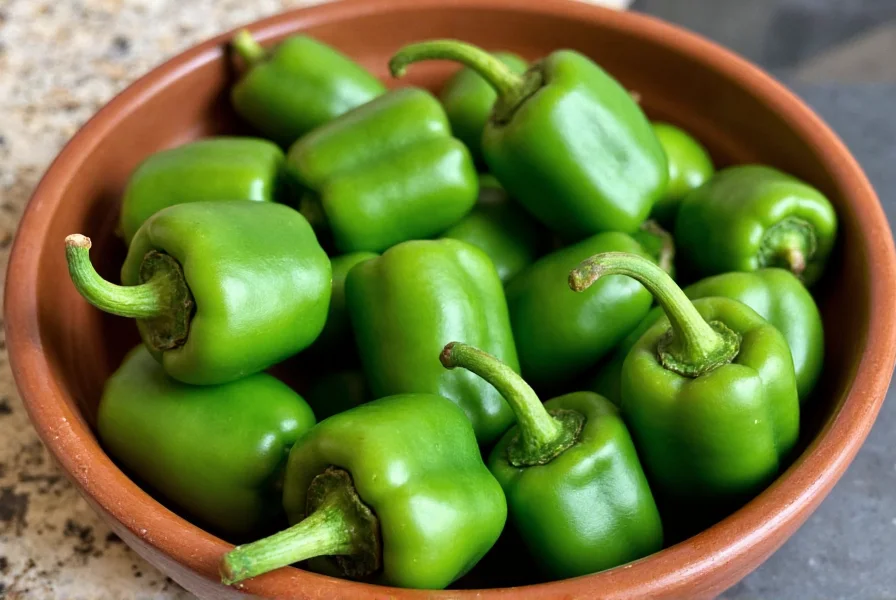Understanding poblano pepper spice level is essential for home cooks and culinary enthusiasts who want to use these versatile peppers effectively. Unlike their fiery relatives, poblanos offer a gentle warmth that enhances dishes without dominating flavors. This comprehensive guide explores everything you need to know about poblano heat levels, including factors that affect their spiciness and how they compare to other common peppers.
Understanding Poblano Pepper Heat Measurement
The Scoville scale measures chili pepper heat by determining capsaicin concentration—the compound responsible for spiciness. Poblanos register between 1,000-2,000 Scoville Heat Units, making them milder than many assume. For context:
| Pepper Type | Scoville Heat Units (SHU) | Heat Level |
|---|---|---|
| Bell Pepper | 0 SHU | Not spicy |
| Poblano Pepper | 1,000-2,000 SHU | Mild to medium |
| Jalapeño Pepper | 2,500-8,000 SHU | Medium |
| Serrano Pepper | 10,000-23,000 SHU | Hot |
| Habanero Pepper | 100,000-350,000 SHU | Very hot |
Factors That Influence Poblano Pepper Spice Level
Several variables affect how hot your poblano peppers might be:
- Maturation stage: Green poblanos (harvested early) tend to be milder than red-ripened versions
- Growing conditions: Stressors like inconsistent watering or extreme temperatures can increase capsaicin production
- Seed and membrane content: The white ribs and seeds contain most capsaicin—removing them reduces heat significantly
- Individual variation: Even within the same plant, heat levels can differ between peppers

Fresh Poblano vs. Dried Ancho Pepper Heat
When poblano peppers are dried, they become anchos. This transformation affects their heat profile:
- Fresh poblanos: 1,000-2,000 SHU (mild to medium)
- Dried anchos: 1,000-1,500 SHU (slightly milder)
The drying process concentrates flavors while slightly reducing perceived heat. Anchos develop a rich, smoky-sweet profile that makes them popular in mole sauces and other traditional Mexican dishes. Understanding this poblano vs ancho pepper heat difference helps cooks select the right form for their recipes.
Culinary Applications for Mild Poblano Heat
The moderate poblano pepper spice level makes them incredibly versatile in the kitchen. Unlike hotter peppers that can overwhelm dishes, poblanos provide subtle warmth that complements rather than dominates.
Chefs often use roasted poblano peppers in:
- Chiles Rellenos (stuffed peppers)
- Enchilada sauces
- Quesadillas and tacos
- Soups and stews
- Egg dishes like huevos rancheros
For those wondering are poblano peppers spicy enough for authentic Mexican cuisine, the answer is yes—they provide the traditional background heat without making dishes uncomfortably hot.
Managing Poblano Pepper Heat in Cooking
Even mild peppers like poblanos can vary in heat. Here are practical tips for controlling spiciness:
- Always taste a small piece before adding to recipes
- Remove seeds and white membranes for the mildest result
- Pair with dairy products (cheese, sour cream) to counteract heat
- Roast peppers to mellow their flavor profile
- Start with smaller quantities and adjust to taste

Common Misconceptions About Poblano Heat
Several myths persist about poblano pepper spice level:
- Myth: All poblanos are extremely hot
Fact: They're consistently milder than jalapeños—perfect for spice-sensitive palates - Myth: Larger poblanos are always hotter
Fact: Size doesn't reliably indicate heat level; growing conditions matter more - Myth: Poblanos can't be used in mild dishes
Fact: Their gentle heat enhances flavors without overwhelming, making them ideal for family-friendly meals
Understanding these facts helps cooks make informed decisions when working with these versatile peppers. The next time you're comparing poblano pepper heat level vs jalapeno, remember that poblanos offer about half the heat of even the mildest jalapeños.
Conclusion
Poblano peppers' mild to medium heat level (1,000-2,000 SHU) makes them one of the most versatile peppers for everyday cooking. Their gentle warmth enhances dishes without overwhelming other flavors, and their heat can be easily controlled through preparation techniques. Whether you're exploring authentic Mexican cuisine or simply looking to add subtle depth to your cooking, understanding poblano pepper spice level helps you use these peppers effectively.











 浙公网安备
33010002000092号
浙公网安备
33010002000092号 浙B2-20120091-4
浙B2-20120091-4